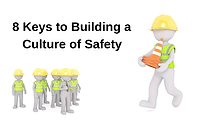The Value of a PPE Bag
Simple investment yields major returns on culture and employee engagement.

Does your company use PPE bags? This term refers to what is usually a large duffel bag or plastic container, utilized to organize personal protective equipment for employees. The PPE bag is a simple, effective resource that can help an organization communicate a higher level of care and commitment to their team. This small gesture can pay dividends in employee engagement, retention and even recruitment.
In Maslow’s Heirarchy of Needs, he expresses as part of his Theory of Human Motivation that unless the base needs are met, humans will struggle to reach higher states of realization. Safety serves as the second tier of human needs and motivation. As humans, we all require a sense of safety if we are going to operate beyond our physiological needs into a state of belonging. When an employee feels like they are safe, they can begin to feel like they belong and this is key to retaining good talent in your organization. Before you think we are making too deep of a philosophical reach with this text, let’s peer behind the curtain of some of the most common safety approaches. Here are some real-life situations to consider.
Company A has never heard of a PPE bag.
Those in a position of leadership at Company A know what PPE is but they believe it isn’t their responsibility to provide PPE and/or a carrying case that enables their employees to keep their protective equipment organized is unnecessary. Company A provides the minimal amount of PPE they believe is required. They are aware there are OSHA regulations but believe ignorance is a preemptive policy – if we don’t talk about it then we cannot be blamed for it.

Day one for a new employee at Company A includes filling out basic paperwork, brief introductions to management, and out the door with a team member who will provide them with “on the job training.” Whether Company A is aware of it or not, according to the Institute for Work & Health, “Employees in their first month on the job have more than three times the risk for a lost-time injury than workers who have been at their job for more than a year.” When Company A does not place an emphasis on training, safety, and systems, they are costing themselves money and potentially putting new recruits in scenarios of harm that can be easily avoided.
Company B recycles their PPE bags (and even some of their PPE).
Those in a position of leadership at Company B have implemented safety programs and provide their employees with used equipment. While this is a significant step above Company A’s approach, there are still some cultural misses that occur with this approach. Company B has a safety program but their safety meetings consist of someone reading dryly from a script because they don’t want to risk deviations. Company B likely has a safety manager or someone in the organization delegated with this task (in addition to their other duties). They believe in safety with their words but they are not fully invested in making safety a culture.
Day one at Company B consists of filling out basic hiring paperwork, watching a series of short videos on safety topics, and a quick tour of the facility with a representative. They will meet up with the designated safety person who will run them briefly through safety topics, have them sign some forms, and then they will be handed a used PPE bag with safety supplies. While the organization or employees in charge of the program are making an effort to meet safety requirements, there is much still to be desired for communicating care and engaging the employees.

According to the Occupational Safety and Health Administration (OSHA), “Employers are also required to train each worker required to use personal protective equipment to know: 1) When it is necessary; 2) What kind is necessary; 3) How to properly put it on, adjust, wear and take it off, 4) The limitations of the equipment; 5) Proper care, maintenance, useful life, and disposal of the equipment.”
Company C incorporates the PPE bag into their onboarding process.
Those in a position of leadership for Company C understand how difficult it is to compete for resources in the current economy. Investing in recruiting, hiring, developing, and retaining good talent is vital to their success. Company C as an organization works to model a safety culture from the top down and sets the expectation that every team member follows this process. As such, they understand that day one and the onboarding process are key to setting the tone, vision, and impact that a new recruit will bring to the team.
Company C takes pride in their organization and believes presenting a new recruit with the tools they will need to look, feel and be a part of the team is a key engagement component from day one. In this approach an employee is presented with the roadmap to success at Company C, they are presented with a company representative that will assist them in their journey and they are gradually introduced to key values of the organization.
Investing in simple PPE details can pay big returns in employee engagement.
To build a thriving culture of safety and engagement, leaders must understand the hazards associated with the work that team members will be conducting. Whomever is responsible for safety and/or ordering supplies should understand the tools available and their application.

When a team member unravels their protective coveralls they should not be surprised to find that it has no booties or hood. Ordering protective suits that aren’t rated for the conditions they will be used in can be frustrating and dangerous. When a suit rips and employees are exposed to contaminants because someone wanted to save a dollar or ordered incorrectly, what does this communicate to the team members? Sending team members into wet conditions in a suit that has not coated to withstand moisture can be an unpleasant and disgusting experience.
When you understand that safety is not only a basic human need, it is also a key motivation, it changes how those in leadership should approach the topic. Company culture is 100 percent composed of what you do as opposed to what you have written on your walls. Simple concepts such as training for real world scenarios, ordering the right supplies, and taking pride in your PPE bag go a long way to maintaining a thriving safety culture. Remember, when an employee feels like they are safe, they can begin to feel like they belong and this is key to retaining good talent in your organization.
Looking for a reprint of this article?
From high-res PDFs to custom plaques, order your copy today!








